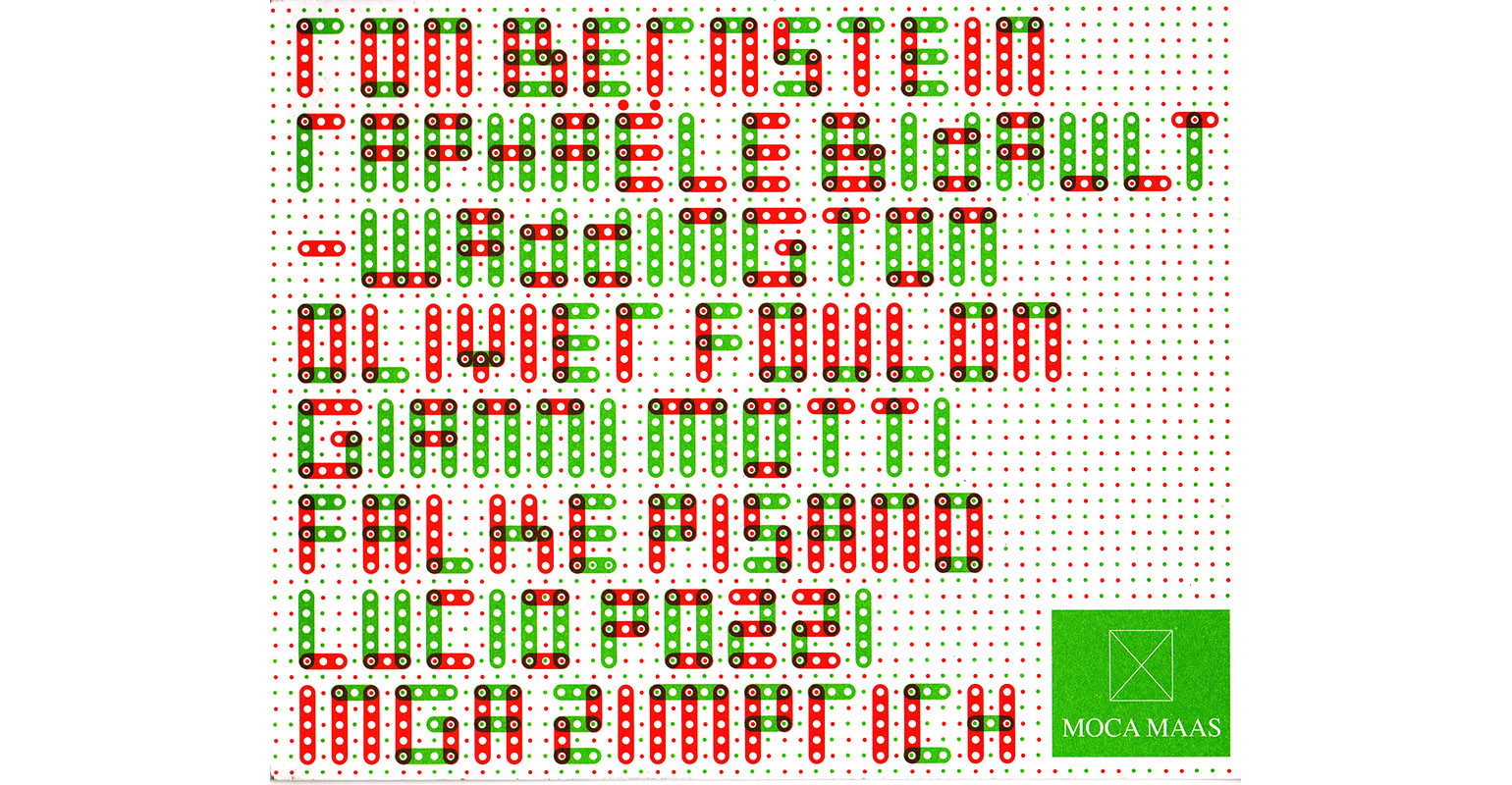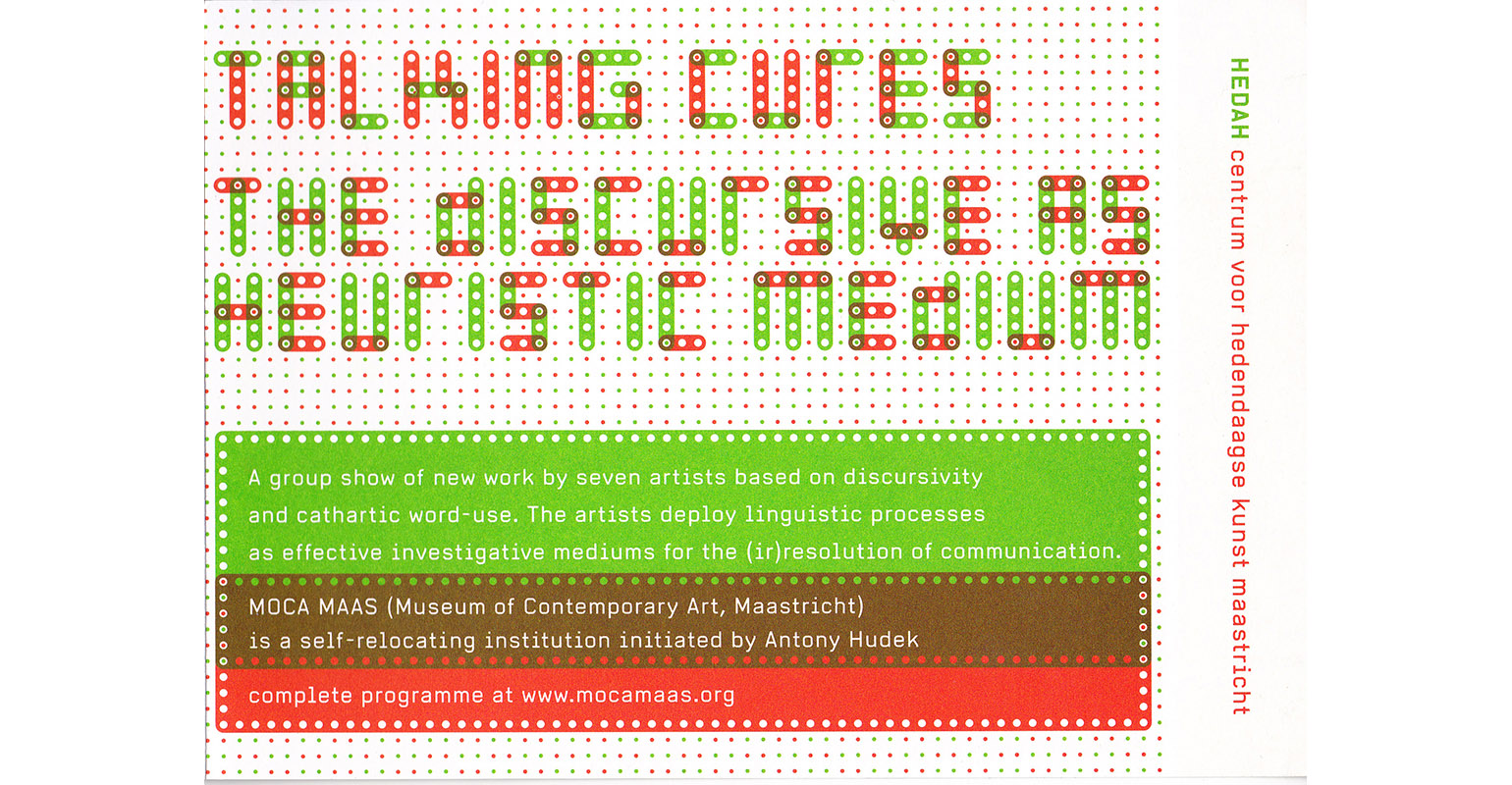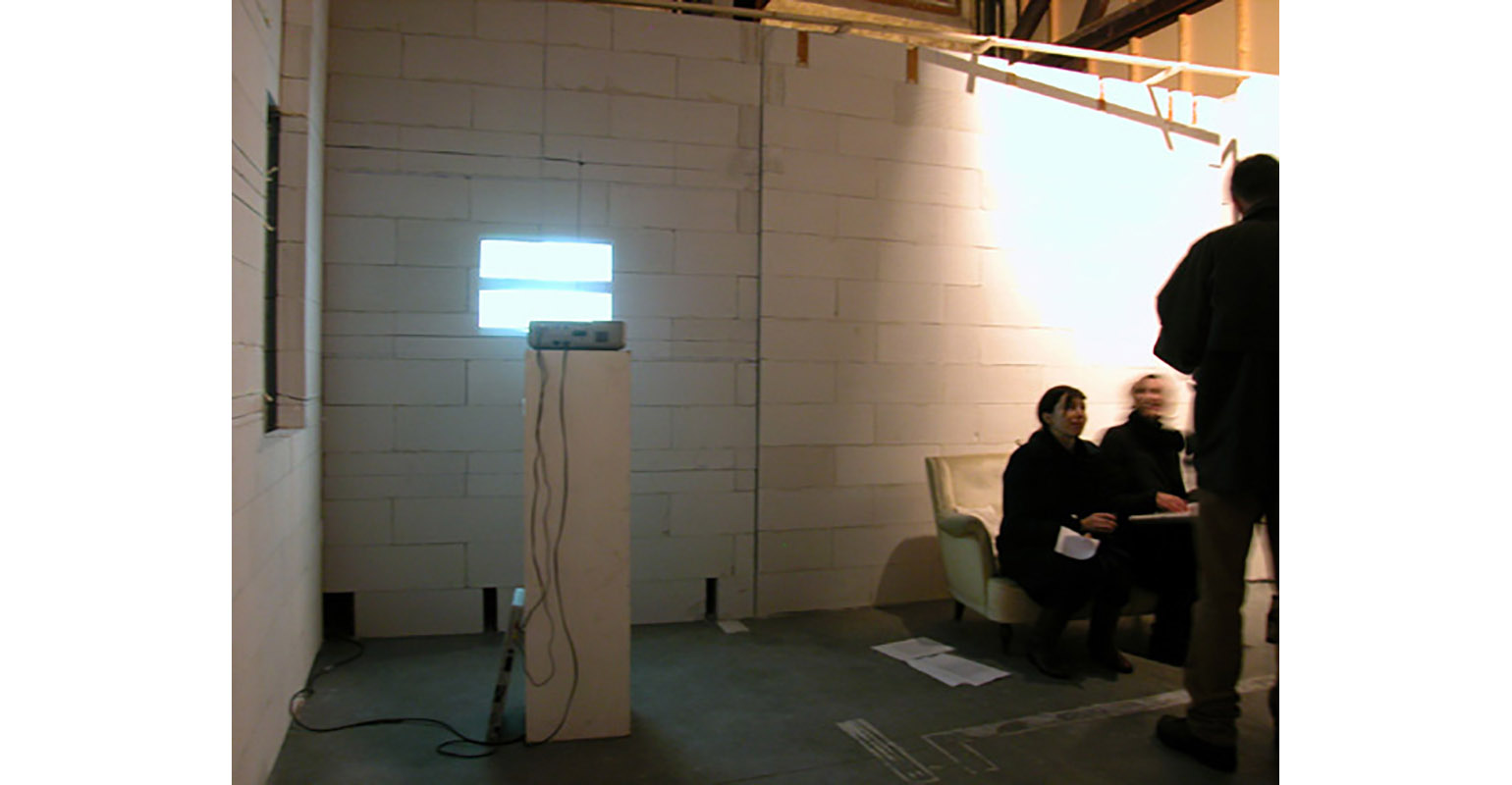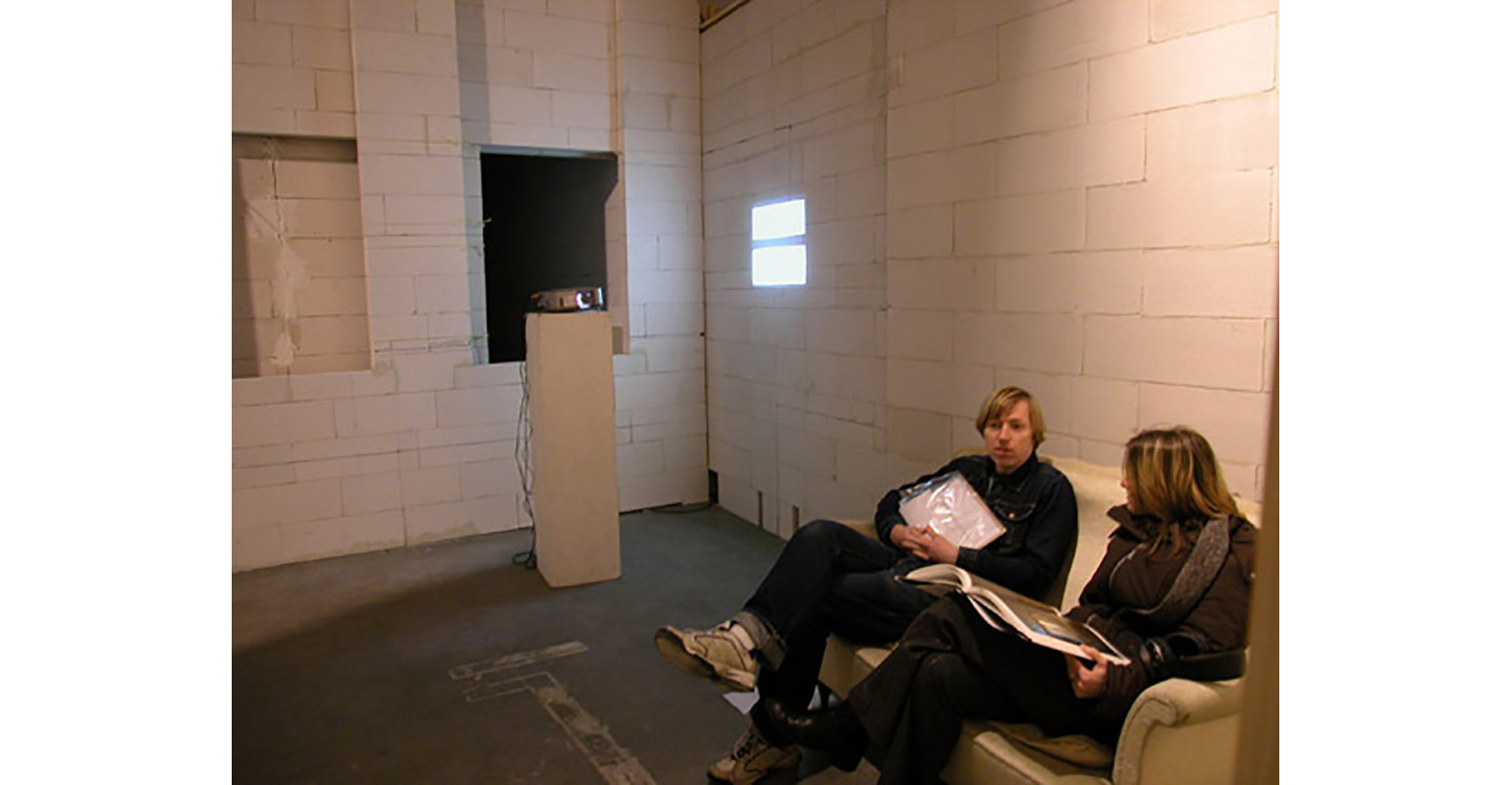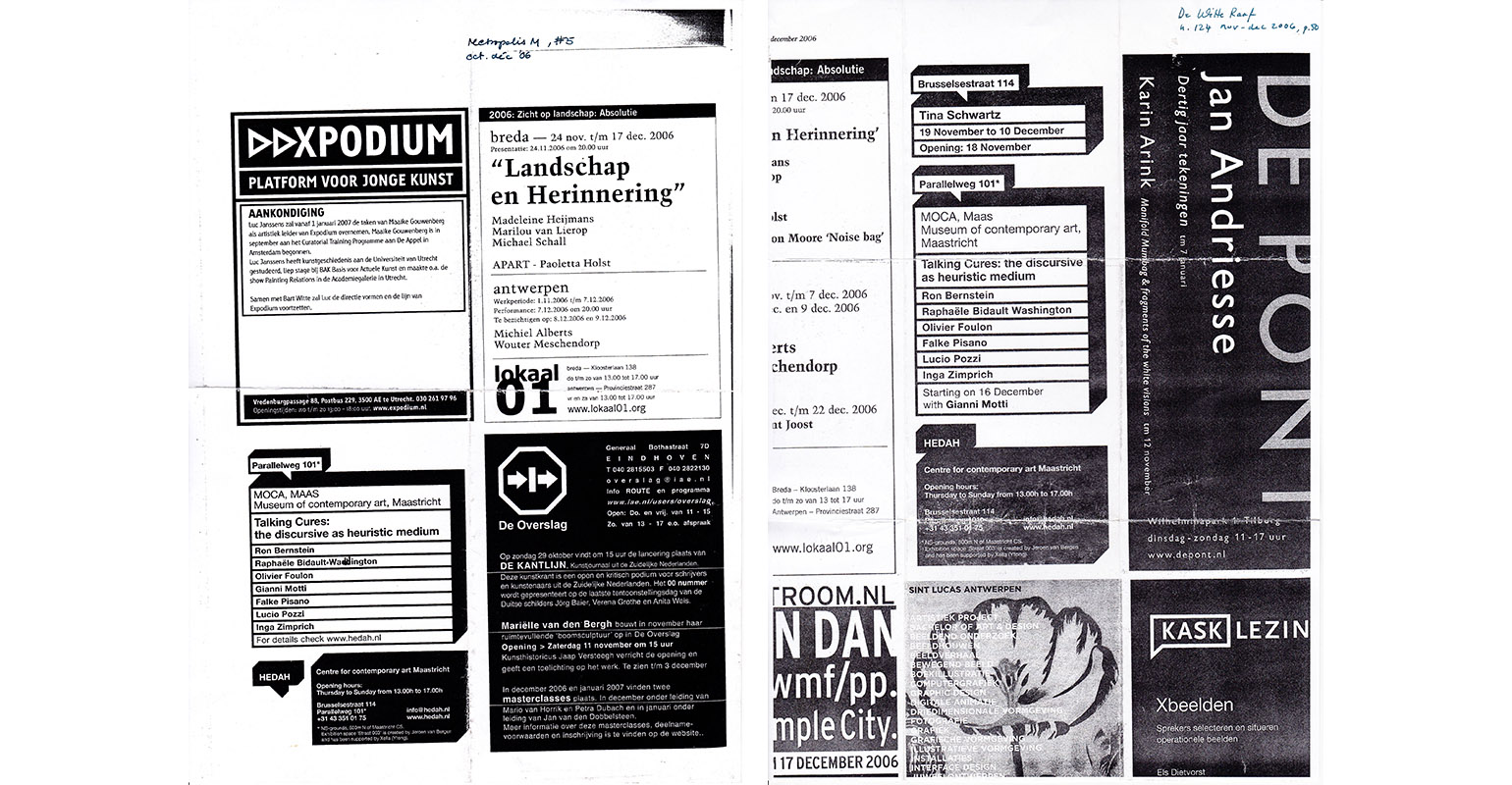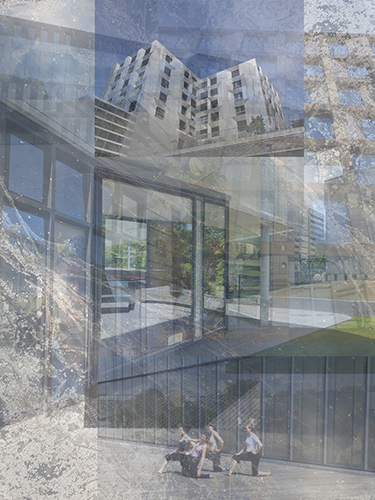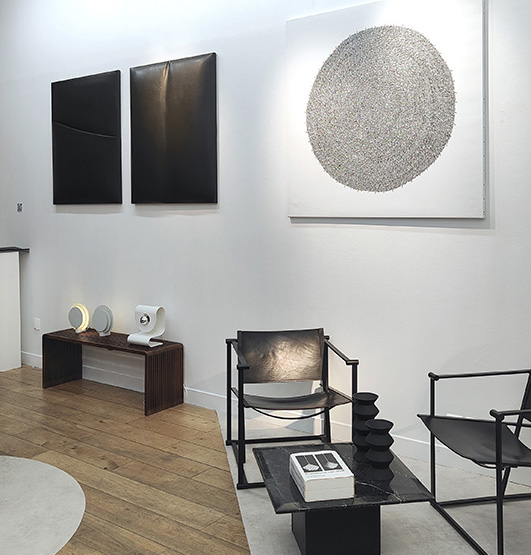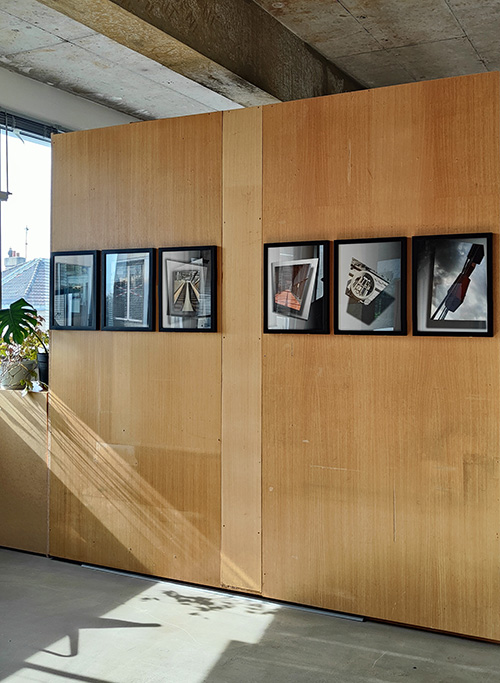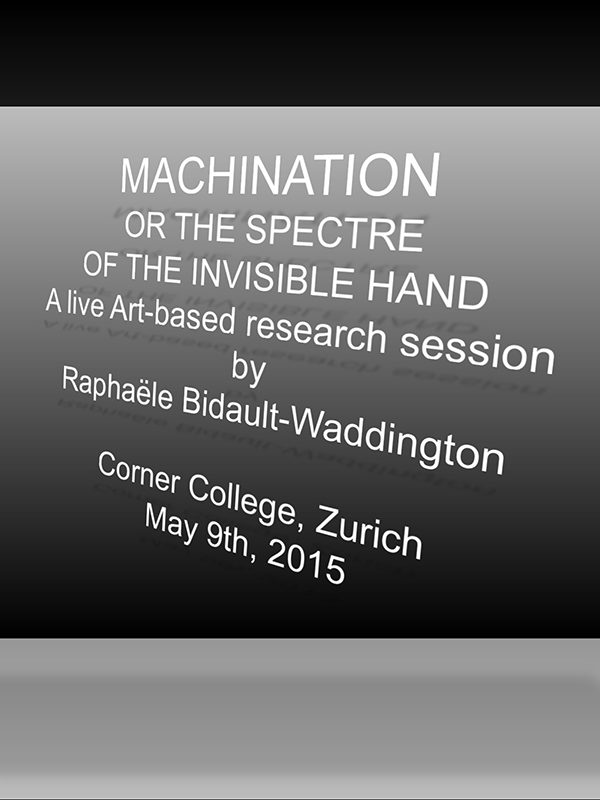Talking Cures, the Discursive as Heuristic Medium, 2006.
MOCA Maas, Museum Of Contemporary Art at Hedah Art Center, Maastricht, Netherland.
Groupshow curator: Antony Hudek
Artists: Gianni Motti, Falke Pisano, Raphaele Bidault-Waddington, Olivier Foulon, Inga Zimprich, Lucio Pozzi.
Exhibited works: 2 videos QuestionnArt (8mn, 2000) and Art vs Intelligence (18mn, 2002) resulting from two sound inquiries in art contexts in Paris (rue Louise Weiss galleries’ opening, and FIAC)
View Art vs Intelligence on vimeo (in French).
Press release
As the first exhibition of Maastricht’s newest contemporary art venue, Talking Cures brings together seven established and emerging artists for whom the discursive acts as a means of exploration, negotiation, experimentation, discovery, problem solving, or conflict instigation / resolution. Whether it is a carefully crafted rhetorical monologue or an apparently improvised interjection, a multi-person chat or a contractual (dis)agreement, the participating artists uncover the ramifications of the paraphrase: ‘the message is the medium.’
By deploying language – in a wide variety of code – as both means and end, the seven artists challenge conventional modes of apprehending art, mobilising the ‘viewer’ to become performer, interlocutor, correspondent, listener, bystander, or client. As they recast the traditional dialogic encounter between beholder and art object, the artists’ performances bear directly upon the institutional framework they invest. From contemplative space of personal enrichment to collective arena for oral/aural participation and judgment, the museum becomes precisely a space of becoming, where the cure never ends, the object never formalises, and satisfaction is always just another sentence, conversation, question, consultancy, or session away.
In keeping with the exhibition’s focus on verbalisation, no catalogue will be published on the occasion of Talking Cures. Instead Moca, Maas will rely on the word-of-mouth generated by the news of its inauguration to insure the exhibition’s promotion. The more people inquire about and discuss it, the more Talking Cures will be fulfilling the museum’s central mandate, that of stimulating inquiry into the initial, and always provisional formulation of a cultural institution’s self-image and renown.
Ron Bernstein triggers occurrences which involve, on the one hand, a ‘hard core’ – pitting dynamic forces against each other – and on the other a loose outer ring composed of accidental or intentional spectator-participants, including himself. At the intersection of the two sets he establishes a dramatic tension which, though never far from outright humour, barely masks agonistic intent. He is co-founder of Hedah, Maastricht, and exhibits regularly.
Raphaële Bidault-Waddington adopts proven business models of value production to the creative domain. With the rigour that motivates a high-performance executive, she builds evolving topographies in which various centres carry out cultural tasks, for profit and non-profit organisations. The fluidity with which her graphs process images and texts belies the apparent, yet real, functionality of her universe.
Olivier Foulon produces and works with books, paintings, drawings and slide projections that blend, often tongue-in-cheek, the visual and textual orders of things. Steeped in art history and literature, his practice shuttles between re- and dis-appearance, and recurrence. He is the laureate of the 2005 Young Belgian Painters Award, as well as the co-founder of the Brussels-based magazine Copie de Voyage.
Gianni Motti crashes spectacular events as one does a party. His politicised interferences most frequently occur in the public domain, so that the dispassionate eye of the media has no choice but to pay witness to the sudden breakdown of communitarian values and social hygiene, when the enforced geometry of the masses flirts with chaos. Among his recent exhibitions, he represented Switzerland at the 51st Venice Biennial in 2005.
Falke Pisano envisions scenarios in which objects, often subsumed under ‘abstract sculpture,’ become protagonists without stable or unitary identity in circuitous philosophical investigations. Her texts, lectures, and occasional sculpture scrutinise language’s agency as it informs the processes of translating, describing and (re)telling. She is the recent recipient of the Hiscox Art Award; her work was featured in this year’s Liste, Basel.
Lucio Pozzi systematically eludes stylistic classification, working across accepted and acceptable definitions of genres and mediums. De-territorialised in the extreme, his practice organises itself according to principles – grids, charts, scripts – only to morph into probabilities and heterogeneity. His work features in the permanent collection of the Museum of Modern Art, New York, among numerous other public and private collections.
Inga Zimprich configures network structures through which to implement novel forms of knowledge sharing and production. Using digital as well as analog modes of communication, her designs map a transdisciplinary grey area between hacktivism and creative routing. Among her recent and upcoming co-initiatives are http://www.think-tank.nl and the Faculty of Invisibility (http://www.department.cc/).



